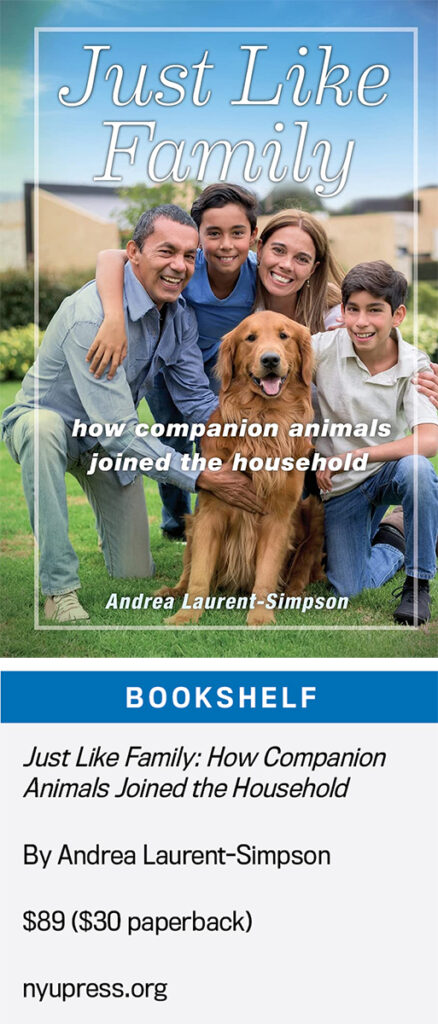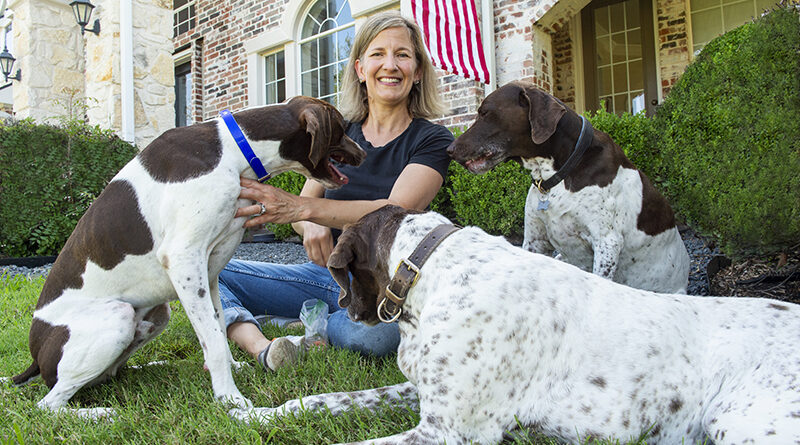American Family Goes to the Dogs, Cats
SMU author explores implications of multispecies households
Do you sign your pets’ names on your holiday card? Have you ever sent your dog to daycare? Do you regularly shop for cat or dog toys? Welcome to a new breed of American family.
In Just Like Family: How Companion Animals Joined the Household (New York University Press: 2021), SMU sociologist Andrea Laurent-Simpson asserts what most pet-owners already know – the American family structure is changing to include nonhuman species, and the implications are huge.

“Dogs and cats within the American family have a profound impact on things like fertility considerations, the parent-child relationship, family finances, involvement of extended family members, and the household structure itself,” Laurent-Simpson said. “Dogs and cats are treated like children, siblings, grandchildren.”
The American Veterinary Medical Association found that 85 percent of dog-owners and 76 percent of cat-owners think of their pets as family.
Increasingly, American families consider their pets in decisions such as child-rearing, homebuying, job location, travel, and budgets. Americans in 2020 spent more than $103 billion on their pets, a $6 billion increase over 2019.
As Hurricane Katrina approached in 2005, nearly half of New Orleans residents refused to evacuate without their pets, according to a survey by the Fritz Institute. In response, in 2006, Congress passed the PETS Act, authorizing FEMA to rescue, care, and provide shelter for household pets during an emergency. In addition, as pet custody battles rage in divorce courts, three states have passed new divorce laws requiring courts to treat pets as family members rather than property.
Laurent-Simpson also suggests that the growing emphasis on the multispecies family has affected the declining birth rate in the United States. The U.S total fertility rate – a measure of the number of children born per 1,000 women – hit a record low in 2020, continuing a constant decline that began in 2007.
“The role of the companion animal in the childfree, multispecies family may well incrementally contribute to delaying or even eventually opting out of childbirth,” she said. “The multispecies family without children is emerging as a new and acceptable form of diversified family structure.”
Americans have long loved their pets, but Laurent-Simpson ties the development of this new type of family to the massive demographic shifts that began in the 1970s.
The rise in such nontraditional family structures as single-parent families, childfree families, grandparent families, and LGBTQ families paved the way, she said.
Some conditions that created the multispecies family go back to the Industrial Revolution when families began to focus less on subsistence and more on loving, belonging, self-actualization, and self-happiness, Laurent-Simpson said. “In order for the multispecies family to come to fruition in its current form, major society-level attitudinal shifts had to occur.”









